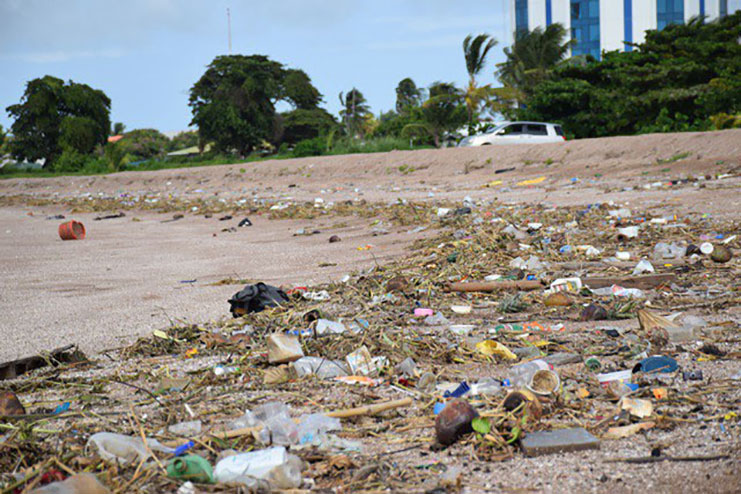BIODIVERSITY connects us all. We belong to the web of life — birds and trees, flowers and bees, humankind and rivers and mountains. Frogs and turtles, butterflies and eagles, ferns and greenhead are also needed to make up a complete environment.
While invented for its convenience and low production cost, our oftentimes insensitive actions have wrecked nature and its pristine scenery. Over the years biodiversity has been affected. Irresponsible disposal of plastics has caused them to accumulate in our rivers and oceans and mostly along our coastline, becoming both a national and global crisis. Approximately 40 percent of the world’s oceans is currently covered with plastics, with the rate set to rise, given our current consumption patterns. 
Despite recycling and other efforts to solve the crisis, the problem is rapidly intensifying. Plastics production has grown 500 percent over the last 30 years across the nations. It is still increasing at a rate of 3-5 percent per year.
Plastics and biodiversity
Plastic being buoyant and free, they float in the sea. Persistent plastics can find their way on top or below the waters as micro-plastics. Plastic pollution can affect land, rivers, seas and oceans. Living organisms, particularly marine mammals can die from improper disposal of plastics. Fishes and birds are no different.
The Center of Biological diversity said 15-51 trillion pieces of plastics are within the oceans daily. Thousands (1000s) of animals eat or are caught in plastics. “Marine plastic litter pollution is already affecting more than 800 marine species through ingestion, entanglement and habitat change,” according to the UN Environment’s coral reef unit.
Seabirds mistake plastics for food and eat them, plastics reduce the storage of their stomach and they die from starvation. While, sea turtles mistake plastics for jellyfishes, and they eat and choke on them. Plastic straws can get into their little nostrils. All these plastics in the ocean can cause damage to their outer body and their internal organs.
Entanglement is also a significant threat to marine species. Marine mammals often get caught in abandoned nets and they are left there, fighting to come out of the tangle they have found themselves. As much as up to 40,000 fur seals are killed each year when they get tangled in plastic debris.
The proposed ban on single-use plastics
With the impacts of climate change on ecosystems already being a significant problem, the additional threat of plastics must be taken seriously. It is because of this, that Guyana decided to ban single-use plastics. The protection of our biodiversity and ecosystems are important and we want to ensure their continued existence. We want to ensure sustainable management and coexistence for life, both on land and in waters.

We do not have to wait for 2021 for this ban to take effect, we can start now and correct our mistakes. Use less plastic and ensure proper waste- disposal systems are employed. Using reusable and recycled materials is always possible. Support the Single-Use plastic ban.
“The Environment is Everybody’s Business”
#592saysnotoSUP.
You can share your ideas and questions by sending letters to The Environmental Protection Agency, C/O Communications Department, Ganges Street, Sophia, GEORGETOWN, or email us at eit.epaguyana@gmail.com or follow us on Facebook, Instagram and YouTube.



.jpg)








